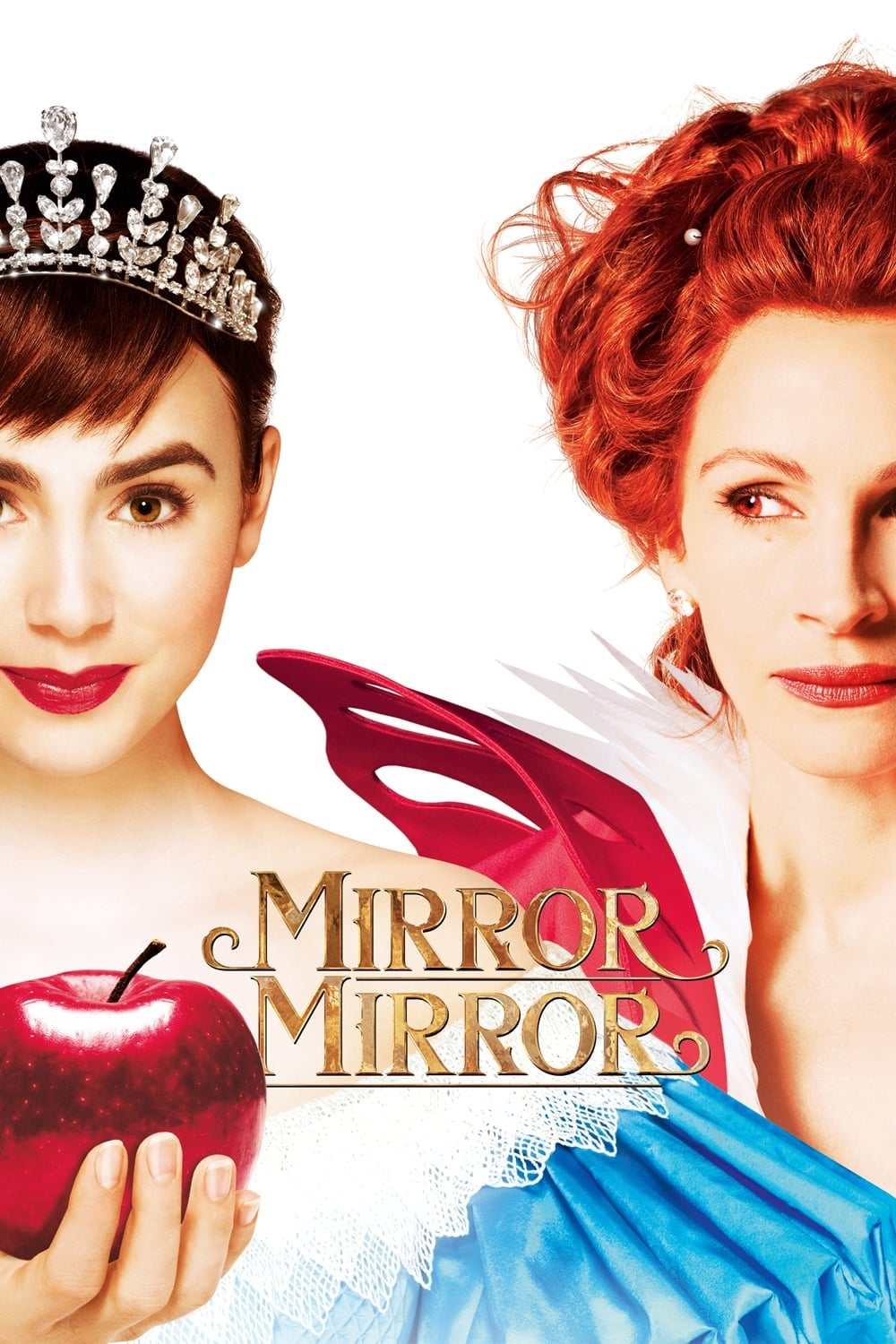
After she spends all her money, an evil enchantress queen schemes to marry a handsome, wealthy prince. There's just one problem - he's in love with a beautiful princess, Snow White. Now, joined by seven rebellious dwarves, Snow White launches an epic battle of good vs. evil...
08 Feb Mirror Mirror (I) (2012)
Strings, Surfaces
I really don’t care much that this is a failure. And gosh it seems to be.
It is at least a rewarding and risky approach to framing. When you try adapting a known story, the only value the new storyteller can add it the framing, and in today’s mass market that means some mix of cuteness, cleverness and irony.
What we have here:
• Our mirror is not just a face, but a world that is entered by coming out of the surface of a lake through the mirror. This is much better reasoned that the concept at the end of the last Depp pirate movie where they moved up through an inverted water-air boundary.
• Within the inner world are two connected island structures, curious in their construction and we never learn anything thing about their origin or nature. The second, more interesting structure never enters the story at all except as possibly explained below. Good storytelling is enhanced by what you leave out. These structures are similar to that in the wild dream world of ‘Where the Wild Things Are,’ built of raw trees and held together by mystery.
• Within one of these structures, our evil queen enters and goes deep down a stairway. There is no indication that this is underwater, and indeed there is conscious contrast with the rooms the queen has in her outer world, including a boudoir in the clouds with an entire wall impossibly missing behind the bed. (In the original story, the implication was that sex with this woman was so profound and thrilling and the source of her magic.) This to my mind is o much better done that the underground of ‘Pan’s Labyrinth.’
• Within that underground/underwater structure is another mirror, a modest one as the portal to another dimension. This literally is the mirror’s mirror. Almost certainly if we went that that mirror, we would be in the second structure, the one the inner queen actually lives in.
• Within that mirror is not a disembodied genie but a version of our queen, younger, more magical and introspective. She exists, as we discover, not only in an omniscient space above the action of the story within, but over the world of the viewer. (We see her in her own structure in other contexts as a whole body, not just a face.)
• Within that mirror queen’s world, we have her personal world, the centrepiece of which is a combination Enochian skryer’s ball and zoetrope, both composed of mirrors. (The latter is a primitive movie projector.)
• As the mirror queen gives a framing narrative, we enter the ‘movie’; of the zoetrope.
• In a double-frame, we have first the inner movie recount of the backstory, using porcelain dolls, and then rather seamlessly the main movie. This by itself follows what I call Ted’s law where the abstraction distance from the movie to the inner movie is the same as (established) from the viewer’s world to the world of the main movie.
I really liked the nested worlds of ‘Inception,’ but this seems more subtle and varied, with more delicate implied machinery. Such deeply nested construction, with multiple overlapping devices, does not happen by accident and is carefully architected.
Later, there is an entry of the mirror queen in the world of the queen. This is done via strings crossing folds and operating hostile puppets. The idea is brilliant but this sequence is the least engaging in the movie. My guess is that Julia's presence in the movie increases the risk to much that the studio operators got involved and honked up the tone and timing.
This filmmaker gave us ‘The Fall’ which was this same sort of egg within an egg framing with the inside being colourful filling. This time around, the container, the form, is similarly wonderful, but inside is a bunch of silliness that tries to hit the tone of ‘Princess Bride’; but fails. This is in the same category I put ‘Casper’; a worthless movie in a beautifully conceived frame.
I wish we could have something of a mind-merge between this filmmaker’s mastery of framing and Danny Boyle’s mastery of the actual telling of the story when we get there. So watch the beginning, and then the penultimate moments, and trash the rest.
Posted in 2012
Ted’s Evaluation — 2 of 3: Has some interesting elements.


No Comments